Are you looking for a program that strictly teaches addition facts using rote memorization techniques? Are you looking for a six week program where children master addition facts without counting or using their fingers?
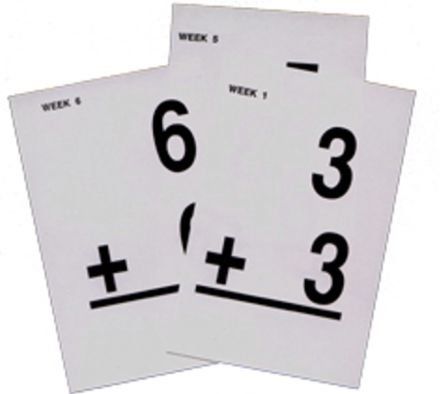

The Schoolhouse crew members were given the homeschool version of Addition Teaching and Learning Made Easy created by Glenda Brown James to review last month. We had a choice of reviewing either the addition or multiplication workbook. I chose to review the sixty-four page reproducible addition workbook which is suitable for children in first through second grade. The book may also be helpful for children with special needs and is optional for children in kindergarten. I used this book with my 4 1/2 year old daughter in hopes to master those last few addition facts that were causing her some trouble. Therefore, this book may also be appropriate and successfully used with preschool-aged children depending on their abilities in math. Alyssa is very good at memorizing and has a strong background knowledge in addition. I must note that my daughter is currently working through curriculums meant for first and second grade so please do not force your child to do these activities unless they are ready. You know your child and their needs best.
The book arrived comb-bound with a colorful front cover. You will find a table of contents and a short philosophy blurb inside the book. There are three printable games on colored cardstock and perforated flash cards for drilling exercises found at the back of the book. The book contains a pre-test and a post-test to evaluate your child's knowledge of math facts before and after use of the book. The author provides a few lessons at the beginning to work on addition facts containing 0 and 1. An addition table is provided which shows all of the math facts the child will learn eliminating the duplicates and addition facts containing 0 or 1. The rest of the book is divided into weekly activities by day. Each day of the week your child will complete a worksheet for six weeks. The worksheets are labeled Monday through Friday for weeks 1-6. The directions on the worksheets (if any) were for the most part self-explanatory and pretty easy to follow. The book included basic lesson plans on one page for the entire program. The author recommends using concrete objects at the beginning of each lesson to practice weekly addition facts before drill work. The game directions and weekly review directions were vague at times allowing for flexibility. Your child will focus on only six addition facts per week and they are shown on the weekly guide sheet. That's only 36 facts to memorize in six weeks! The facts were randomly chosen for each week forcing the child to recall and recite answers from their memory rather than the addition table. This is not a complete math program it simply targets addition facts using rote memorization methods and activities. If your child can fluently and automatically recite addition facts from memory without hesitation, then they will have an easier time with higher-order thinking math concepts in the future. Memorizing facts does not necessarily teach the "why" behind addition and it doesn't focus on the reasoning behind the skill, but I believe children must memorize some math concepts in order to be successful. Math facts can be memorized using an assortment of games, hands-on activities, and practice worksheets.
Other Materials Required
Concrete Manipulatives or Counters (anything will work)
Two Brads
Clothespins
Ziplock Bags
File Folders (optional)
Lamination (optional)
Computer, Ink, and Copy Paper (for copying reproducibles)
Pricing
The cost for the "Addition Teaching and Learning Made Easy" homeschool book is available at the inexpensive or affordable price of $24.95. Classroom packages and prices are also available on their website. This is what you'll receive in your homeschool package (it's really just a book containing the rest of the items):
Other Products of Interest
The "Multiplication Teaching and Learning Made Easy" homeschool book is also offered for only $24.95. There is a multiplication classroom package too. Check their website for classroom pricing.
Initial Reaction
This is not what I was expecting. I am not fond on worksheet-based programs. In the beginning, I was not impressed but by the end of the book I was satisfied with how it worked and I didn't mind assigning worksheets to my daughter. This type of program was different from what Alyssa was used to and she enjoyed completing the activities independently. I never heard her complain at all about having to complete the worksheet activities. She had trouble with a few of the addition facts but overall the program was extremely easy for her to complete.
Pros
- The book activities are easy to implement on a daily basis. We found it very easy to include this program into our homeschool day.
- There is a lot of flexibility with this program. The child can work at their own pace. They can do one worksheet a day or as many pages as they like. They can work as fast or as slow as needed. I would still recommend playing an addition game, working with counters, or doing drill exercises daily if worksheets are completed in advance.
- The activities are short and sweet. They can be completed in about 5-15 minutes depending on your child's knowledge of math facts and their interest level.
- The material is reproducible within a family. You may make as many copies as needed for your children.
- The flashcards are perforated which should make it easier for the user and saves time for the busy homeschooling mom or educator. You will not need to cut out each individual addition fact card. Cardstock paper was used for the flashcards which makes them more durable. They will last longer especially if laminated. I personally chose to use my own addition fact cards.
- The comb-binding makes it easier to lay flat when using the book for lessons or copying materials for multiple children.
Possible Cons
- This is a worksheet-based program. Some children may not like completing worksheets if it is not their learning style. Children may prefer concrete manipulatives over worksheets. They may also get bored doing the same exact type of worksheet each day of the week.
- The game directions and weekly review were not clearly stated. They were a bit on the vague side for example, "Lastly give addition weekly reviews found in the back of the book. Also make up your own daily reviews." I wasn't sure exactly what to do for weekly reviews. Did she mean come up with my own ideas or did the author mean use the few materials provided to plan weekly reviews? Do we do one weekly review each week or do we combine them? I ended up changing a bunch of the activities and doing what I wanted.
- This is strictly a drill or rote memorization program using worksheet activities for learning addition facts up to 18. No other math concepts are taught. Drill type exercises are not always seen favorably. You must memorize some things but I also believe in making activities hands-on for early exposure and exploration. I feel it is important to find a balance between hands-on and drill type exercises.
- For some odd reason, I found it difficult to remove the perforated flash cards from the comb-binding. The cards started to tear as I tried to remove them from the binding. I was hesitant to continue removing them so I decided to use my own addition flash cards.
- The printable games are available on colored cardstock making printing them a bit more difficult. It works great for individuals that plan on tearing the book apart wanting colorful activities. But, there are some individuals, like myself, that prefer to copy reproducible forms within our family in order to keep the book intact for future use. This also enables users to choose preferential colors for games helpful for individuals that color code operational activities.
Possible Improvements
- Provide more hands-on printable addition games for children to play while learning addition math facts. There are so many possibilities and ways to make learning addition facts fun using actual games. The last review game isn't really a game ... it is just a way to independently practice addition facts using addition wheels.
- Is it possible to provide blackline printable games available on white cardstock for easy printing for those of us not wanting to tear the book apart in order to use the colored addition cardstock games?
- I would prefer that the book activities include additional math facts up to a sum of 24 instead of sums to 18.
- High quality spiral binding is much easier to work with and seems to be better quality than comb-binding.
- Correct the game error or flaw found in the gumball game. This was very disappointing.
- Continue to offer the perforated flash cards with this package but as a separate item in the package rather than including them inside the comb-bound book.
- Clarify the wording of the product description on the website. I was under the impression that there would be many games and that I was receiving an actual package. Let the customers know that the items are all contained in one book.
- Expand on lesson and activity directions or ideas including the clarification of misunderstood directions.
How We Used It
(All Adaptations and Changes Will Be Highlighted Blue)
We used this math program on a daily basis at least 5 times per week as a replacement for our current math curriculum. It could definitely be used as a supplement in conjunction with your chosen math curriculum since the the book is not a complete math curriculum. The activities also require very little time to complete if added to daily math curriculum. There were days that we completed one worksheet a day, but there were also days where several worksheets were completed in one sitting depending on Alyssa's interest and schedule for the week. I am a bad girl ... I did not follow the directions as stated in the book. This is pretty usual for me though because I like to change things up. I changed a few things and did what worked best for my daughter. I did not remove the flash cards as directed in the manual after I saw that the cards were tearing. I pulled out a set of addition flash cards and removed the cards needed and organized them into six main piles. The addition +1 and +0 facts were combined in a separate pile. I wrapped each set with a rubber band. We focused on the targeted math facts during the drill exercises but I ended up adding all the duplicate addition math facts, +0's, and +1 math facts to Alyssa's practice pile each day. This means that her pile became larger over time. I wanted Alyssa to see, learn, and practice all facts while realizing that it didn't matter the order of the addends - the sum was still the same (commutative property). She didn't mind the extra cards. I understand that studying fewer cards makes learning math facts easier and not as overwhelming for some children. It shows the child that there aren't many addition facts to study in the end and it may possibly motivate the child more to learn the facts. Do what is best for your child and situation. If Alyssa felt overwhelmed by having too many cards, then I would have obviously removed the duplicates and easy facts. I may still do this for the last week.
Organization
First, I labeled five colored file folders with the days of the week. I labeled an additional folder "Completed" to store all completed activities after they were hung up for at least a day. I printed copies of each of the activities for the duration of the review. This organizational method was not recommended or mentioned in the book but it did keep paperwork organized and in one place. After using the file folder system, I quickly realized that I actually needed to add a sixth folder for games and weekly reviews. I also stored the game pieces in labeled Ziplock bags.
Flash Card Use (Not Used According to Book Directions)
First, we used manipulatives or counters to practice the weekly addition facts introduced. Then, we completed a drill exercise together using only the six required addition facts as stated in the book. I believe you are supposed to ONLY review THOSE six math fact cards on a DAILY basis - at least that is how I understood the directions. But, as usual, we changed things up a bit. We added the week's six addition facts to the rest of the flash cards on the same day and we reviewed all of them every single day. She spent a few minutes going through ALL of them. She would sort them into two piles: "Mastered" and "Practice." She would review the addition facts needing more practice. She mainly used two methods to help her remember the facts. Alyssa would use a method similar to Charlotte Mason's spelling visualization strategy combined with First Language Lessons idea of repeating the information three times. First, she would study the addition fact needing practice. She sang or stated the fact three times. Most of the time she sang it or used a silly accent. Then, she would close her eyes and try to picture it in her head while saying the math fact aloud. She would immediately check her answer and repeat the math fact if it was incorrect. Then, I drilled her using ALL the flash cards including the duplicates and addition of 1 and 0 facts. She would jump up and down trying to tell me them as fast as she possibly could. At times, she would race her daddy. Oh ... I almost forgot ... we also discussed math strategies when learning the new facts. I taught her different ways to figure out the answer if she got stuck such as using doubles, making ten, counting on, and so forth. There were times when she applied those addition strategies and learned the facts even quicker. Alyssa started to say that she didn't need to do the flash card drill exercises anymore because she already knew them all - this was at the start of week 5. At this point, I removed the duplicates and plus 0 and 1 facts. We focused on only the new facts and those mentioned on the weekly guide the first day. I plan to use the duplicate flashcards during the last two weeks. I will switch them out with the facts that are stated in the weekly guide every other day in order to review commutative property facts. This also changes up the facts that she views and memorizes even though they remain the same. I hope what I am saying makes sense.
Pre-Test and +0, +1 Math Fact Activities
We used a two-part tray to review plus 1 and plus 0 addition facts. The idea is to use any kind of counter or manipulative to practice addition facts. We used her favorite teddy bear counters and red, white, and blue star beads. If the addition fact was 3+0. Then, the child would place 3 counters in the section on the left of the tray and zero counters on the right (as seen in the tray picture below). We practiced addition facts and problem-solving skills this way many, many times when she was much younger. She spent some time exploring other combinations or math facts. It's an oldie but a goodie! She didn't really need the counters or the tray but I wanted to show my readers how you can adapt the drill exercises into a hands-on activity for younger students. This activity was not part of the review product lessons. This is just how we did it.
A Weekly Glance: Daily Worksheet Activities
Monday
Alyssa was excited that she was getting to color today! Her first job was to solve each addition fact. There were some days that she yelled out the sum and I told her if she was correct or not correct before she colored it in. Other days she used a pencil to write the sum first and then proceeded to color in the sums. Each sum was to be colored a particular color based on the key at the top of the page.
Tuesday
She solved addition facts and used the sum to figure out the letter needed for the code. She was thrilled that she could color a firefighter ("her daddy") today after figuring out the hidden message.
Wednesday
She was extremely goofy today during math. I am not sure if she ate a few pieces of candy or what! She made faces for almost every photo. She always knows how to make me smile and laugh. First, she cut the sum cards into pieces. Then, she either yelled out an equation and covered it with the sum or she solved it on paper and then covered it. I checked over her answers if she solved them on paper before she could glue and color the sums down. Be aware that your child may try to just do the puzzle and not solve the equations which defeats the purpose of practicing math facts. I checked Alyssa's knowledge by asking her questions and watching her complete the activity. If the child completes the picture puzzle instead of solving the problems first, then you can always review the equations afterwards by asking and requiring the child to quickly give you the sums to the equations verbally.
Thursday
This worksheet consisted of several different activities. First, your child will work on matching sums to equations. You can always use different colored Wikki Stix and sheet protectors for the matching activities to make the activity more hands-on or if the child has a difficult time drawing straight lines. They will also find the missing addends or sums in an equation. The worksheet also contained addition fact equations written horizontally and vertically exposing the child to the commutative property of addition.
Friday: Problem Solving Day
Each weekly problem solving question was different. This was my favorite activity for the week. It was much easier to adapt or modify the activity. I will post several photos of how we adapted the activities to make it a bit more hands-on and to help with finding solutions. I gave Alyssa colored tiles that matched her crayons for the first week's activity. First, she arranged the color tiles using different combinations. Then, she used matching crayon colors to fill in the hotel windows. She did this three times and asked to create more combinations afterwards.







Weekly Review and Games
There were minimal directions on how and when to do review activities and games. Each week there was a "Girl With Braids" game to complete covering specific facts. As the weeks progressed, we combined the girls and their hair bows to make the activity progress in difficulty. I would always let Alyssa complete this weekly game (really an activity) one week at a time before combining them all. The book does not say to do this but that's how we did it. Weekly review assessments were also included in the book. There was no mention as to whether or not you time the child. I chose to secretly time Alyssa and I asked her to complete the facts as fast as she could to show me how much she learned this week. Another game we played involved solving addition facts in order to move around the game board. We ran into a problem while playing since we both new the answers. There was a major flaw or error in the game. We got to a certain part of the game where we were both stuck in the same spot. We would solve an equation and the board would send us back one space. Alyssa said, "Mommy isn't this boring going back and forth ... back and forth. Should I get one wrong so that we can move forward." The problem is that no matter if you are correct or incorrect - no one moves forward. Incorrect answers don't move. Correct answers move, but then must move back one space over and over again. During the entire game we were side by side following only one space behind and catching up on our next turn unless someone makes a mistake several times in a row. If the two people playing are good at solving addition facts then you will most likely fall into the same trap we did. We continued practicing the rest of the addition facts in the stack and then we stopped the game.
If you have any questions about this product you can contact the author or company here. If you are interested in purchasing this product for your family please click here.
(All Adaptations and Changes Will Be Highlighted Blue)
We used this math program on a daily basis at least 5 times per week as a replacement for our current math curriculum. It could definitely be used as a supplement in conjunction with your chosen math curriculum since the the book is not a complete math curriculum. The activities also require very little time to complete if added to daily math curriculum. There were days that we completed one worksheet a day, but there were also days where several worksheets were completed in one sitting depending on Alyssa's interest and schedule for the week. I am a bad girl ... I did not follow the directions as stated in the book. This is pretty usual for me though because I like to change things up. I changed a few things and did what worked best for my daughter. I did not remove the flash cards as directed in the manual after I saw that the cards were tearing. I pulled out a set of addition flash cards and removed the cards needed and organized them into six main piles. The addition +1 and +0 facts were combined in a separate pile. I wrapped each set with a rubber band. We focused on the targeted math facts during the drill exercises but I ended up adding all the duplicate addition math facts, +0's, and +1 math facts to Alyssa's practice pile each day. This means that her pile became larger over time. I wanted Alyssa to see, learn, and practice all facts while realizing that it didn't matter the order of the addends - the sum was still the same (commutative property). She didn't mind the extra cards. I understand that studying fewer cards makes learning math facts easier and not as overwhelming for some children. It shows the child that there aren't many addition facts to study in the end and it may possibly motivate the child more to learn the facts. Do what is best for your child and situation. If Alyssa felt overwhelmed by having too many cards, then I would have obviously removed the duplicates and easy facts. I may still do this for the last week.
Organization
First, I labeled five colored file folders with the days of the week. I labeled an additional folder "Completed" to store all completed activities after they were hung up for at least a day. I printed copies of each of the activities for the duration of the review. This organizational method was not recommended or mentioned in the book but it did keep paperwork organized and in one place. After using the file folder system, I quickly realized that I actually needed to add a sixth folder for games and weekly reviews. I also stored the game pieces in labeled Ziplock bags.
Flash Card Use (Not Used According to Book Directions)
First, we used manipulatives or counters to practice the weekly addition facts introduced. Then, we completed a drill exercise together using only the six required addition facts as stated in the book. I believe you are supposed to ONLY review THOSE six math fact cards on a DAILY basis - at least that is how I understood the directions. But, as usual, we changed things up a bit. We added the week's six addition facts to the rest of the flash cards on the same day and we reviewed all of them every single day. She spent a few minutes going through ALL of them. She would sort them into two piles: "Mastered" and "Practice." She would review the addition facts needing more practice. She mainly used two methods to help her remember the facts. Alyssa would use a method similar to Charlotte Mason's spelling visualization strategy combined with First Language Lessons idea of repeating the information three times. First, she would study the addition fact needing practice. She sang or stated the fact three times. Most of the time she sang it or used a silly accent. Then, she would close her eyes and try to picture it in her head while saying the math fact aloud. She would immediately check her answer and repeat the math fact if it was incorrect. Then, I drilled her using ALL the flash cards including the duplicates and addition of 1 and 0 facts. She would jump up and down trying to tell me them as fast as she possibly could. At times, she would race her daddy. Oh ... I almost forgot ... we also discussed math strategies when learning the new facts. I taught her different ways to figure out the answer if she got stuck such as using doubles, making ten, counting on, and so forth. There were times when she applied those addition strategies and learned the facts even quicker. Alyssa started to say that she didn't need to do the flash card drill exercises anymore because she already knew them all - this was at the start of week 5. At this point, I removed the duplicates and plus 0 and 1 facts. We focused on only the new facts and those mentioned on the weekly guide the first day. I plan to use the duplicate flashcards during the last two weeks. I will switch them out with the facts that are stated in the weekly guide every other day in order to review commutative property facts. This also changes up the facts that she views and memorizes even though they remain the same. I hope what I am saying makes sense.
Pre-Test and +0, +1 Math Fact Activities
We used a two-part tray to review plus 1 and plus 0 addition facts. The idea is to use any kind of counter or manipulative to practice addition facts. We used her favorite teddy bear counters and red, white, and blue star beads. If the addition fact was 3+0. Then, the child would place 3 counters in the section on the left of the tray and zero counters on the right (as seen in the tray picture below). We practiced addition facts and problem-solving skills this way many, many times when she was much younger. She spent some time exploring other combinations or math facts. It's an oldie but a goodie! She didn't really need the counters or the tray but I wanted to show my readers how you can adapt the drill exercises into a hands-on activity for younger students. This activity was not part of the review product lessons. This is just how we did it.
A Weekly Glance: Daily Worksheet Activities
Monday
Alyssa was excited that she was getting to color today! Her first job was to solve each addition fact. There were some days that she yelled out the sum and I told her if she was correct or not correct before she colored it in. Other days she used a pencil to write the sum first and then proceeded to color in the sums. Each sum was to be colored a particular color based on the key at the top of the page.
Tuesday
She solved addition facts and used the sum to figure out the letter needed for the code. She was thrilled that she could color a firefighter ("her daddy") today after figuring out the hidden message.
Wednesday
She was extremely goofy today during math. I am not sure if she ate a few pieces of candy or what! She made faces for almost every photo. She always knows how to make me smile and laugh. First, she cut the sum cards into pieces. Then, she either yelled out an equation and covered it with the sum or she solved it on paper and then covered it. I checked over her answers if she solved them on paper before she could glue and color the sums down. Be aware that your child may try to just do the puzzle and not solve the equations which defeats the purpose of practicing math facts. I checked Alyssa's knowledge by asking her questions and watching her complete the activity. If the child completes the picture puzzle instead of solving the problems first, then you can always review the equations afterwards by asking and requiring the child to quickly give you the sums to the equations verbally.
Thursday
This worksheet consisted of several different activities. First, your child will work on matching sums to equations. You can always use different colored Wikki Stix and sheet protectors for the matching activities to make the activity more hands-on or if the child has a difficult time drawing straight lines. They will also find the missing addends or sums in an equation. The worksheet also contained addition fact equations written horizontally and vertically exposing the child to the commutative property of addition.
 |
| She always tried to get in the photo! |
Each weekly problem solving question was different. This was my favorite activity for the week. It was much easier to adapt or modify the activity. I will post several photos of how we adapted the activities to make it a bit more hands-on and to help with finding solutions. I gave Alyssa colored tiles that matched her crayons for the first week's activity. First, she arranged the color tiles using different combinations. Then, she used matching crayon colors to fill in the hotel windows. She did this three times and asked to create more combinations afterwards.
The first problem for the second week was easy for her to solve. You could use a three-part tray similar to the one shown above and counters if needed. The next problem solving question was a bit more complicated. I looked all over my house for our mini sport ball erasers to use as manipulatives or counters but I couldn't find them. We used glass gems instead of erasers or balls. She decided that the footballs were white and the soccer balls were blue. She arranged the gems to match the story. She also circled and underlined key words in the problem and used the markings as reminders. You can see that she arranged the "balls or gems" two different ways. She was happy when she found alternate ways to solve the same problem. Her next step was to solve and show her work on paper. The last photo shows a sample of her problem solving work completed.
This next problem solving activity didn't take long to complete. She quickly found the solution and explained to me that, "5+7=12 and 9+2=11. Twelve is one more than eleven so it is the greatest total." Well, it is time to come up with a few of my own activities to review the concepts. We ended up playing a game of "War" to review addition facts. This game is not part of the book but we used it as a review activity. Divide a set of cards between two players. Each player flips over two cards and finds the sum. The first player with the correct response gets both pairs of cards. You can also play the game where each player flips one card over and the first person to announce the sum gets both cards.

Basically, if I can figure out a way to make a worksheet into a hands-on activity ... then I will. For example, during week four dominoes were shown in the picture so Alyssa and I used them to play a domino addition game. As a review, we also completed the activity from the blog titled, First Grade Best. Alyssa cut out and glued the dominoes on the folded paper. She wrote the fact family number sentences for each domino. She said, "These domino equations are so easy." There were only a few dominoes to choose from so I remembered an old activity we used to do. We used the Math Wire Domino Template to match dominoes and write the fact family number sentences. The child can draw the dots or use any type of counters on the mat. We used colored circular chips this time. In the past, we used different beans, mini erasers, or math manipulatives.






There were minimal directions on how and when to do review activities and games. Each week there was a "Girl With Braids" game to complete covering specific facts. As the weeks progressed, we combined the girls and their hair bows to make the activity progress in difficulty. I would always let Alyssa complete this weekly game (really an activity) one week at a time before combining them all. The book does not say to do this but that's how we did it. Weekly review assessments were also included in the book. There was no mention as to whether or not you time the child. I chose to secretly time Alyssa and I asked her to complete the facts as fast as she could to show me how much she learned this week. Another game we played involved solving addition facts in order to move around the game board. We ran into a problem while playing since we both new the answers. There was a major flaw or error in the game. We got to a certain part of the game where we were both stuck in the same spot. We would solve an equation and the board would send us back one space. Alyssa said, "Mommy isn't this boring going back and forth ... back and forth. Should I get one wrong so that we can move forward." The problem is that no matter if you are correct or incorrect - no one moves forward. Incorrect answers don't move. Correct answers move, but then must move back one space over and over again. During the entire game we were side by side following only one space behind and catching up on our next turn unless someone makes a mistake several times in a row. If the two people playing are good at solving addition facts then you will most likely fall into the same trap we did. We continued practicing the rest of the addition facts in the stack and then we stopped the game.
 |
| This was the first week for this game. It was very easy. |
 |
| This is how we reviewed the addition facts for this game after three weeks. |
 |
| I secretly timed her completing the progressively harder and longer weekly reviews. |
 |
| GAME FLAW: This is where we stopped the game. |
Results
This product was not exactly what I was expecting when I heard about it but surprisingly it worked well for us. I was hoping for more printable games and hands-on activities to learn addition facts. I actually have a ton of games we use to review facts however I am always looking for more games to use. Alyssa has mastered the addition facts that we have covered so far and I expect she will master the few remaining addition facts in the allotted amount of time (rest of six week period). Although, I will say that she knew many addition facts before we began this program. I will give her a timed post-test at the end of the six week period. I won't actually tell her I am timing her (as I have done since the beginning). I use my cell phone and start the timer ... when she tells me she is done, I check to see how long it took her to complete all of the problems. I will ask her to work as fast as she can without using her fingers or counting. We will look over her test and discuss the ones that are incorrect at that time and we will continue to review the unknown facts.
Recommendations
I recommend this book to homeschooling families, parents, or classrooms with children in schools looking for a supplementary practice program using old fashioned rote memorization techniques to learn addition facts. This may also be a good after school care program to use with children during homework or tutoring time since I know many teachers will ask students to study their facts for a certain amount of time each night. If your child enjoys cutting, gluing, coloring, finding coded messages, and completing worksheets then this book may meet your needs as a way to practice facts. That being said ... my daughter did enjoy using the book activities, therefore we might consider purchasing the multiplication book in the future ... if she still finds the activities interesting after the full six weeks.
Several Schoolhouse review crew members received either the addition or multiplication book in order to review. Please click here to read about their experiences with the product and to read their wonderful reviews!
Recommendations
I recommend this book to homeschooling families, parents, or classrooms with children in schools looking for a supplementary practice program using old fashioned rote memorization techniques to learn addition facts. This may also be a good after school care program to use with children during homework or tutoring time since I know many teachers will ask students to study their facts for a certain amount of time each night. If your child enjoys cutting, gluing, coloring, finding coded messages, and completing worksheets then this book may meet your needs as a way to practice facts. That being said ... my daughter did enjoy using the book activities, therefore we might consider purchasing the multiplication book in the future ... if she still finds the activities interesting after the full six weeks.
Several Schoolhouse review crew members received either the addition or multiplication book in order to review. Please click here to read about their experiences with the product and to read their wonderful reviews!
Disclaimer: I received Teaching and Learning Addition Made Easy, at no cost to me, in exchange for an honest, professional review on my blog. All opinions expressed are my own and are not influenced by the company.
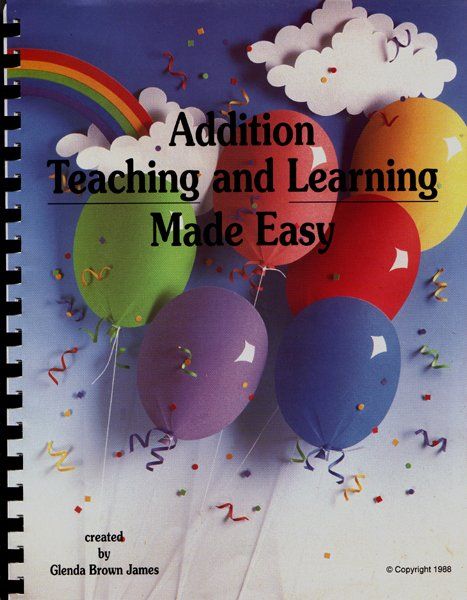
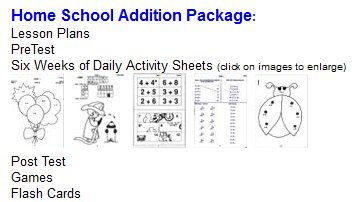
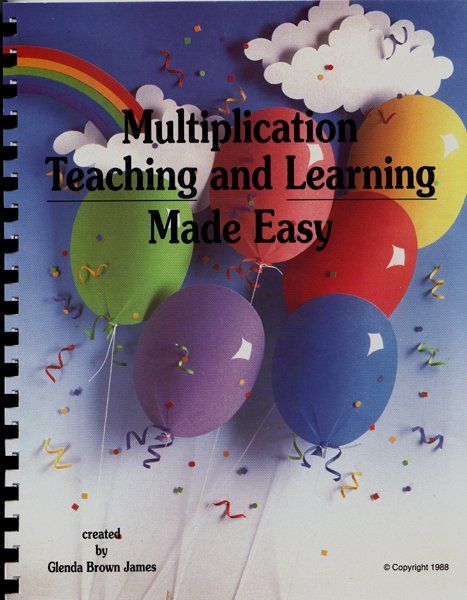































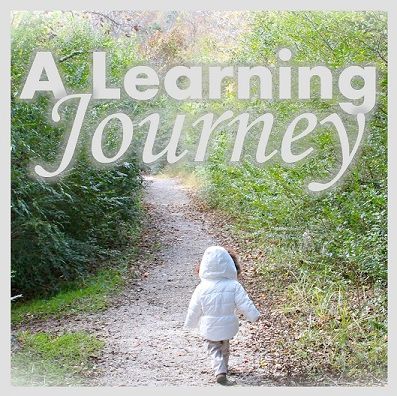






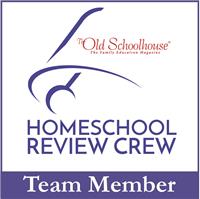
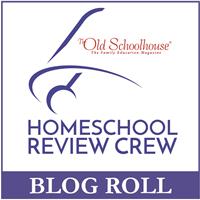





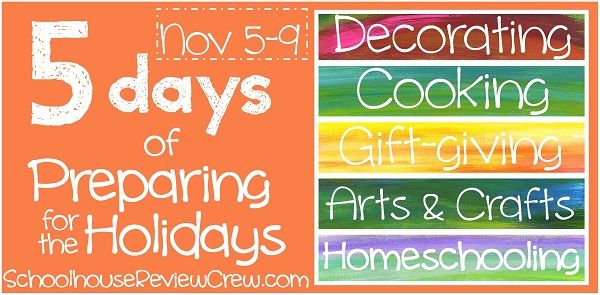
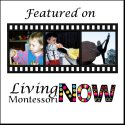


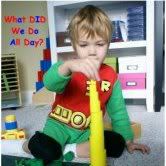



Thanks for the review. Looks interesting. I always love teaching math with games and activities as well as hard work memorizing facts.
ReplyDelete